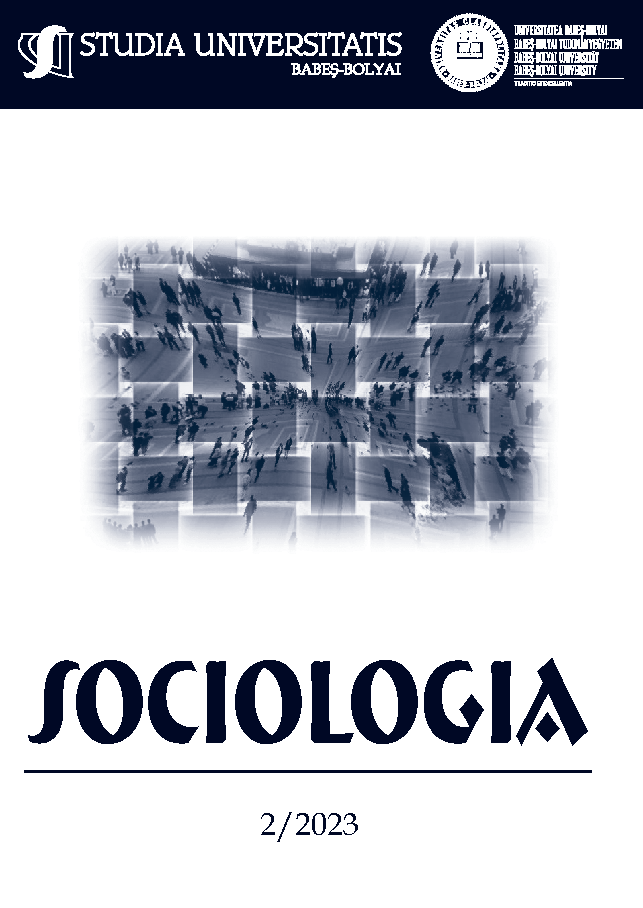Planning Hatvan: Urban Planning and Repression in One of Baia Mare’s Roma Neighbourhoods (1950-1989)
DOI:
https://doi.org/10.2478/subbs-2023-0013Keywords:
urban planning, socialist Romania, Roma people, criminalisation, archivesAbstract
This paper starts from the premise that social space, the state space, is a socially productive territory characterized, among other things, by hierarchical social, economic and political relations. This hierarchical dimension of space comes to the fore when researching the urban marginalization of Roma people in Romania. The mechanisms of exclusion employed by the state against Roma groups are situated in a wide range of other policies, among which uneven territorial development ranks chief. As such, this paper seeks to analyse the junction between these processes. It asks the question: how did the process of urban planning reinforce the urban marginalization of Roma people during socialism in Baia Mare? In order to address this question, I mobilize the results of two years of archival research in the city of Baia Mare, coupled with the discursive analysis of this archival material. I perform a diachronic analysis of how Roma people were targeted by state practices of urban marginalization, such as stigmatization, criminalization and repression. I show how the policies of systematisation of Baia Mare shaped the territory of a particular neighbourhood – Hatvan, attempting to manage and control the Roma population there. Throughout the 1960s, Hatvan was considered a focal point for crime. This led to a large-scale plan to completely transform the area through evictions, demolitions and the displacement of Roma people. The result was a place that was seen as clean, ordered and lawful social space, which became what is currently known as the Vasile Alecsandri neighbourhood. However, this space continues to this day to be one of social marginalisation, economic deprivation and institutionalised racism.
References
Ban, Cornel (2014) Dependență și dezvoltare. Economia politică a capitalismului românesc, Tact, Cluj-Napoca, 2014.
Bottoni, Stefano (2017) ‘Finding the Enemy: Ethnicized State Violence and Population Control in Ceaușescu’s Romania’, Journal of Cold War Studies, 19 (4): 113 – 136
Culiciu, Cristian (2016) ‘Ideology and Demography in Romanian urban centres (1945-1989)’, RJHIS, 3 (2): 7 – 35.
Dumitrache Liliana; Daniela Zamfir, Mariana Nae, Gabriel Simion, Ilinca-Valentina Stoica (2016) ‘The Urban Nexus: Contradictions and Dilemmas of (Post)Communist (Sub)Urbanization in Romania’, Human Geographies – Journal of Studies and Research in Human Geography, 10 (1): 39 – 58.
Fosztó, László (2018) ‘Was There a ‘Gypsy Problem’ in Socialist Romania? From Suppressing ‘Nationalism’ to Recognition of a National Minority’, Studia Universitatis Babes-Bolyai Sociologia63 (LXIII): 117 – 140.
Foucault, Michel (1978 [2004]) ‘Security, Territory, Population’, Palgrave Macmillan.
Lefebvre, Henri (2009 [1978]) ‘Space and the State’ in ‘State, Space, World. Selected Essays’, University of Minnesota Press, Minneapolis, 2009.
Mărginean, Mara (2017) ‘Some Discussions on Functionalist Housing and its Economics in Romania by the Late 1950s and Early 1960s’, StudiaPolitica. Romanian Political Science Review, 1: 73 – 84.
Mărginean, Mara (2023) ‘Locuire și muncă în perioada socialistă în Romania: o scurtă sinteză a cadrului legislativ național’, in ‘Analiza situației romilor din comunități marginalizate din Baia Mare în contextul politicilor privind dezvoltarea, locuirea și munca’, Precwork Document, June 2023, available here: http://precwork.granturi.ubbcluj.ro/document-de-analiza-si-recomandari/.
Marin, Manuela (ed.) (2017) Romii și regimul communist din România. Marginalizare, integrare și opoziție, vols. I and II, ed. Mega, Cluj-Napoca, 2017.
Molnár, Virág Eszter (2013) Building the State: Architecture, Politics, and State Formation in Post-War Central Europe, Routledge, 2013.
National Demographic Commission (1977) Study regarding the socio-economic state of the Roma population, 27 December 1977.
Pásztor, Gyöngyi and Péter László (2009) ‘Romanian Housing Problems: Past and Present’, Studia Universitatis Babes-Bolyai, Sociologia, LIV (1): 79 – 100.
Petrovici, Norbert (2017) Zona urbană. O economie politică a socialismului românesc, Tact, Cluj-Napoca, 2017.
Ruggie, John Gerard (1993) ‘Territoriality and Beyond: Problematizing Modernity in International Relations’, International Organization, 47 (1): 139 – 174.
Stroe, Miruna (2015) Locuire între proiect și decizie politică. România 1954 – 1966, Simetria, București, 2015.
Tulbure, Irina (2016) Arhitectură și urbanism în România anilor 1944 – 1960: constrângere și experiment, Simetria, București, 2016.
Turcu, Catalina (2017) ‘Mind the Poorest: Social Housing Provision in Post-crisis Romania’, Critical Housing Analysis, 4 (2): 54 – 66.
Voinea, Andrei Razvan; Dana Dolghin; GergőPulay (2022) Ferentari incomplet. Volumul I: politici urbane la o margine de oraș (1846 – 2011), ed. Studio Zona, București, 2022.
Downloads
Published
How to Cite
Issue
Section
License
Copyright (c) 2024 Studia Universitatis Babeș-Bolyai Sociologia

This work is licensed under a Creative Commons Attribution-NonCommercial-NoDerivatives 4.0 International License.






